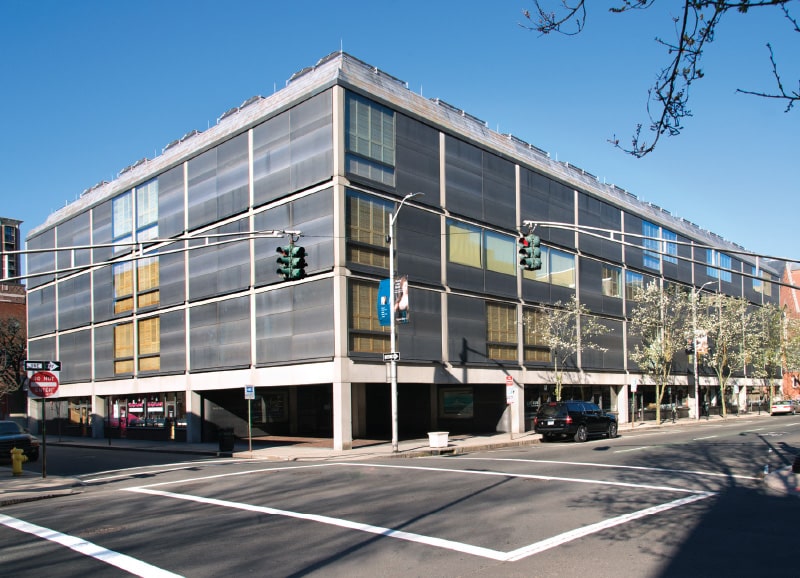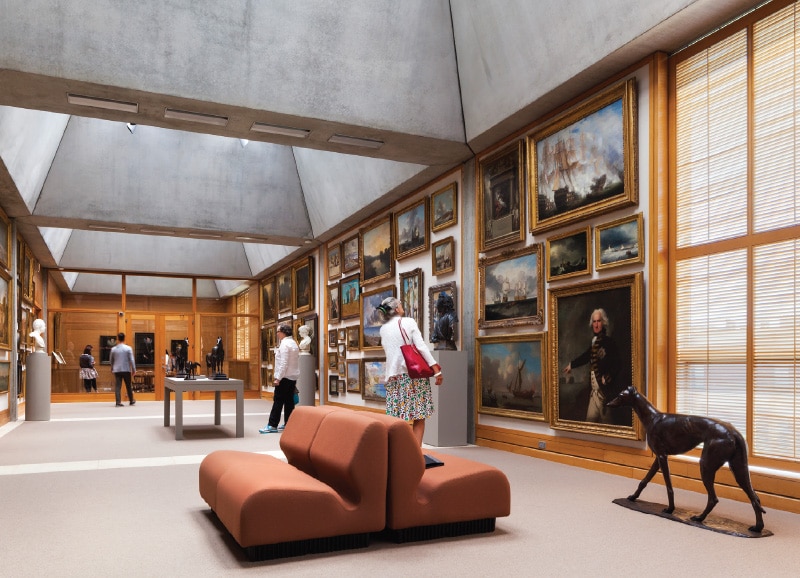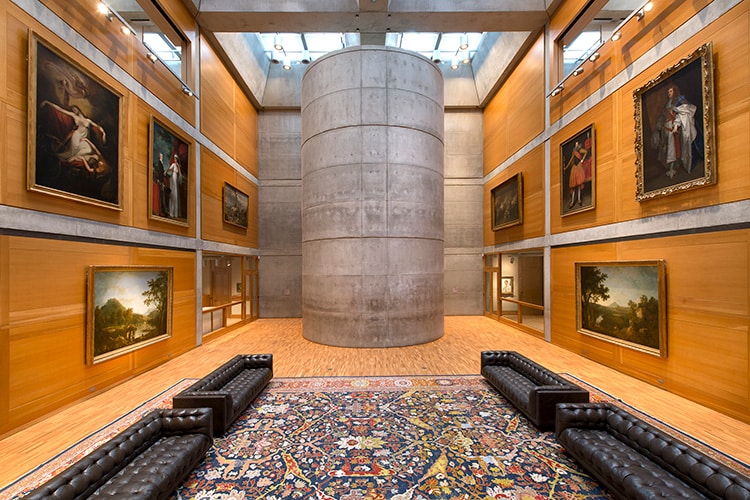As a graduate student at the Yale School of Architecture in New Haven, Connecticut, Daphne Kalomiris Petros was familiar with the Yale Center for British Art (YCBA)—a building on campus designed by master architect Louis Kahn and the home to the most comprehensive collection of British art outside the United Kingdom.
As part of Knight Architecture, Petros played an integral role in the company’s eight-year conservation project of the YCBA. The task of conserving the building was an especially delicate one at the time, considering the high regard the architecture community lauded on the building.
Among other accolades, the YCBA received the prestigious Twenty-five Year Award by the American Institute of Architects in 2005.
Integrating new technologies and infrastructure into the building to improve the safety of both the visitors and the artwork, as well as striking the right balance between the modern updates and the original integrity of Kahn’s design, was at the forefront of Petros’ process.

Reflecting on the project, Petros described her part as “one of the bigger challenges.” Among other things, she had to find a way to make the required changes while keeping in mind the public’s expectation that the building would look—at least to the untrained eye—exactly like the original.
The legacy of Louis Kahn
To truly appreciate the complexity of the YCBA’s renovation, it’s helpful to understand the ways in which Kahn’s figure looms large in the architecture world. Put simply, Paul Goldberger, one of today’s leading architectural critics, has described Kahn as no less than “the most venerated figure in 20th-century American architecture after Frank Lloyd Wright.”
Kahn’s signature style is characterized by structures that both give the viewer the impression of mass, as well as openly translate the processes required to make a building. The work many scholars consider his masterpiece is the Jatiyo Sangshad Bhaban, which resides in the Bangladeshi capital of Dhaka and houses the country’s parliament. Its huge columns, peppered with cutaways of geometric shapes revealing the block’s texture, epitomizes the Kahn aesthetic.
However, Kahn only arrived at this unique perspective—the one that still makes him beloved to this day—in the later years of his life. At the time of his sudden death, in 1974, Kahn left behind only a handful of buildings that communicated his distinctive vision to the public, making the ones that do exist “a rare event.” The YCBA’s exterior, composed of stainless steel and reflective glass set in a grid-like pattern, is considered one of these such “occasions.” It allows the viewer to see the beauty within the act of assembling a structure and, on the inside, floods the galleries with natural light.
Innovation through collaboration
The Yale Center for British Art is not just one of these treasured examples of Kahn’s later work but one of his final projects. The YCBA was only completed after Kahn’s death, in 1977, spear-headed by his colleagues who used the blueprints he left behind.

Fittingly, the same sense of collaboration that helped erect the building served well in the process of conserving it. “What made [the project] special was the team effort and all the parties involved,” Petros said. “Each member of the team—from the owners to the construction managers, contractors and consultants—was integral to the project’s success. Their unique talents and expertise helped weave together all the details of the building—old and new—into a cohesive design narrative respecting Kahn’s original vision.”
Petros emphasized that, above all, it was this fluid communication that motivated every individual who worked on the building to keep his original creation maintained.
One of the challenges in doing that was trying to incorporate modern safety technology into a minimalist space—one that never imagined today’s building safety advances or the room needed to maneuver them. As a result, brainstorming with a variety of team members allowed Petros to see what needed to be done from every angle.

“Buildings of that era frequently feature exposed concrete,” Petros said. “We can’t run electrical, mechanical and fire suppression systems in a drop ceiling when everything is exposed, so we really had to think creatively of how to run all these different systems on a case-by-case basis.”
New needs, old designs
One of those cases was the precast concrete coffers located on the YCBA’s fourth floor. According to Petros, Kahn referred to these as “V beams” in his design due to their similar shape to the letter.
Kahn had left the V beams hollow on the interior so that they could hold within them the largest piece of ductwork in the building plus wiring for exit signs and lighting. While it was essential to get the new wiring up to the fourth floor, Petros said she knew that simply leaving it exposed among Kahn’s meticulous design would look “rather unsightly.”
To add the updated technology, such as wireless access points, Petros and the contractors decided the best approach was to feed the new wiring into the V beams by creating temporary penetrations in the roof. The team was then able to update the systems without compromising Kahn’s intention to integrate the mechanical systems with the architectural expression of the building.
Such a simplistic summary of this process, however, doesn’t do justice to the additional issues that Petros and her colleagues encountered—in both the V beams and other similar infrastructure work around the YCBA. “My life was centered around how to get wiring from one part of the building to the other,” Petros said.
One of the most important infrastructural puzzles Knight Architecture had to solve was that of the building’s fire suppression system. The fire suppression system in large part did not exist within the building prior to Knight’s project. Sprinklers were only originally found within the basement and non-public areas of the ground floor.
Armed with the knowledge and understanding of the 20 ft x 20 ft grid that the whole structure was based on, Petros decided to use the existing pathways Kahn designed for the ductwork for the sprinkler lines as well.

In the end, the only solution required that one sprinkler head would remain exposed to the Yale Center visitors. Petros thinks though that Kahn, with his belief in “expressing every system,” would have approved of this change.
The renovation’s reverberations
Among other awards, Knight Architecture was recognized for its work on the YCBA as a recipient of the 2016 AIA National Award for Architecture. Petros’ work on Kahn’s building, one of her first projects out of graduate school, has been rewarding in other ways as well.
“I am very grateful to have had the invaluable opportunity to help refurbish such an iconic building so early on in my career,” Petros said. “I was pushed to learn and be exposed to many facets of design, conservation and construction within a short amount of time.”











